Proper tire inflation is a critical part of overall automotive maintenance. Improper inflation can lead to blowouts and uneven wear. But how exactly should you go about inflating tires when they're hot? We did the research to bring you the answer.
The procedure for inflating hot tires is mostly the same as the procedure for inflating cold tires. The only difference is that, when inflating hot tires, you should fill them to approximately 3-5 psi above the recommended level specified by the manufacturer. Since the pressure increases as tires get hotter, this will ensure that the tires are at the manufacturer's recommended level when the tires cool off.
If you still have more questions about tire inflation, don't worry. In this post, we'll discuss the topic in more detail. We'll also talk about whether you should strive to inflate your tires when they are cold as opposed to hot, whether you have to turn your car off to inflate your tires, and much more. Without further ado, let's get into it!
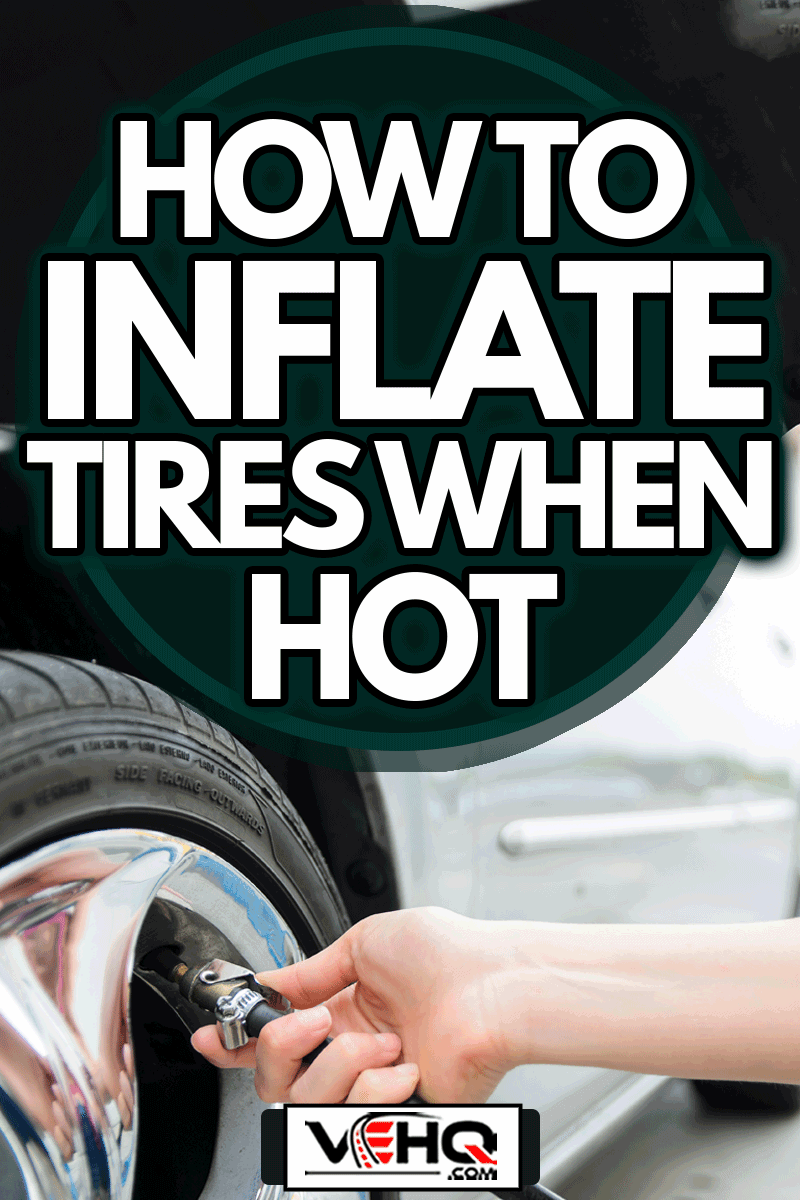
Inflating Hot Tires
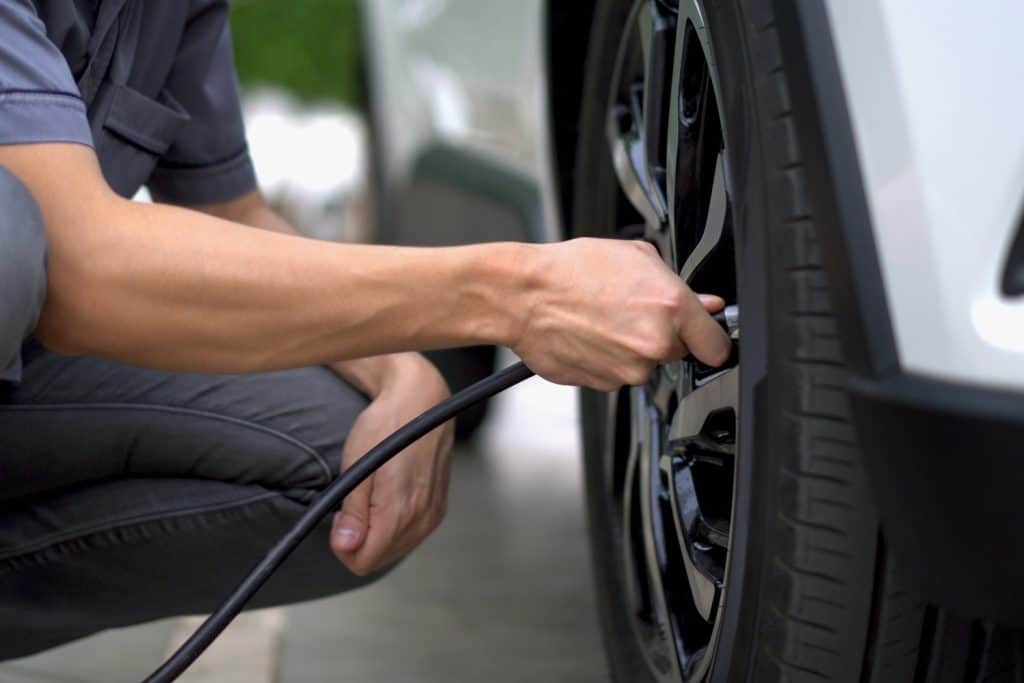
If you find yourself at a gas station after pulling over for a low tire pressure light, you're likely wondering about the procedure for inflating hot tires.
You might already know that tire pressure increases as the tires get hot, but you might not know what to do with this information. After all, the last thing you want is to overinflate your tires to the point where they sustain serious damage as soon as you get back on the road.
The good news is that the process for inflating hot tires is almost identical to the process for inflating cold tires. The only distinction is that, when inflating hot tires, you should overinflate them by approximately 3-5 psi beyond the manufacturer's recommendation.
Tire pressure increases as tire temperature increases, and vice versa. More specifically, tire pressure generally increases by approximately 4 psi shortly after a vehicle starts driving and the tires start heating up from friction.
And of course, as the vehicle sits after being driven, the tire pressure will eventually decrease back to the starting level, all other things being equal.
So, why does all this matter? If you're going to inflate your tires when they're already hot, you need to account for the future drop in pressure when the tires cool off. Let's look at some real numbers.
Let's say your vehicle manufacturer recommends a tire pressure of 35 psi. On a typical day when you start driving, your tires will increase in pressure to approximately 38-40 psi.
So, if you find yourself needing to inflate your tires after you've been driving for a while already, you should inflate your tires to 38-40 psi. Since your tires are already hot, the pressure won't increase more once you hit the road again.
And once you stop driving, your tires will eventually decrease in pressure back to the recommended starting point of approximately 35 psi.
Should I Inflate My Tires Cold Or Hot?
Now that you have all this information on how tire pressure changes as you drive, you might be wondering whether it's preferable to inflate your tires when they're cold or hot.
We established that it's perfectly fine to inflate your tires when they're hot, but if possible, inflate them when they are cold, as doing so will yield the most accurate pressure reading. What's more, manufacturers' pressure recommendations are based on cold tires.
In other words, inflating tires when they are cold eliminates the guesswork associated with inflating hot tires. Although tires generally increase in pressure by approximately 4 psi once a vehicle starts driving, this number isn't necessarily an exact science; environmental conditions and other factors can cause this number to fluctuate slightly.
Do I Have To Turn My Car Off To Put Air In My Tires?
Your car’s engine doesn’t have to be shut off to put air in your tires. However, depending on where you’re at (such as a free drive-through inflation station at a tire shop), there is a key safety consideration to think about if you leave your car running.
If you (or someone else) will be inflating your tires while the engine is running, ensure that the vehicle is in park and that the emergency brake is set to prevent the vehicle from rolling.
Does Low Tire Pressure Mean Flat Tire?
If the low tire pressure light illuminates on your instrument panel, the first thing you probably think is that you have a flat tire.
However, a low tire pressure indicator doesn’t necessarily mean that you have a flat tire. When this indicator appears, it means one of three things—the tire is flat, the tire pressure monitoring system (TPMS) is faulty, or the pressure has simply decreased due to a variety of factors.
To help you better diagnose what causes the indicator to appear, we’ll take a closer look at the possible culprits in more detail.
The Tire Is Flat
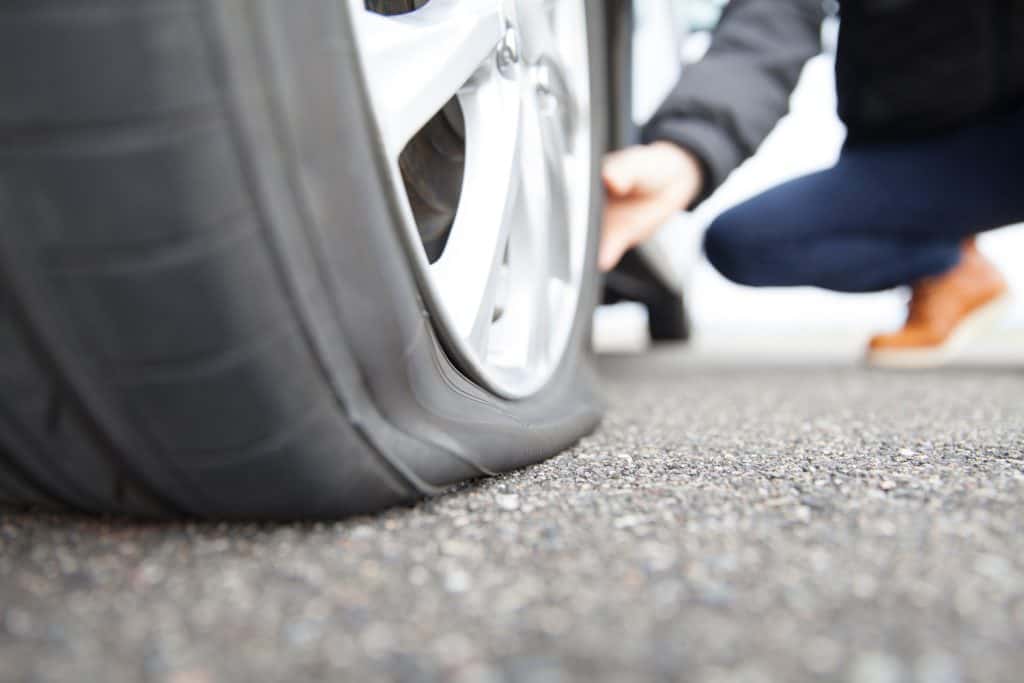
If the low tire pressure indicator comes on, it is indeed possible that the tire is flat. But if this is the case, it should be easy to diagnose.
If you notice any of the following, your tire has likely gone flat:
- A noticeable flapping sound
- A sensation of the vehicle being pulled to one side
- Difficulty accelerating
If you suspect that you have a flat tire, you should pull over immediately, otherwise your rim could sustain serious damage.
The TPMS Is Faulty
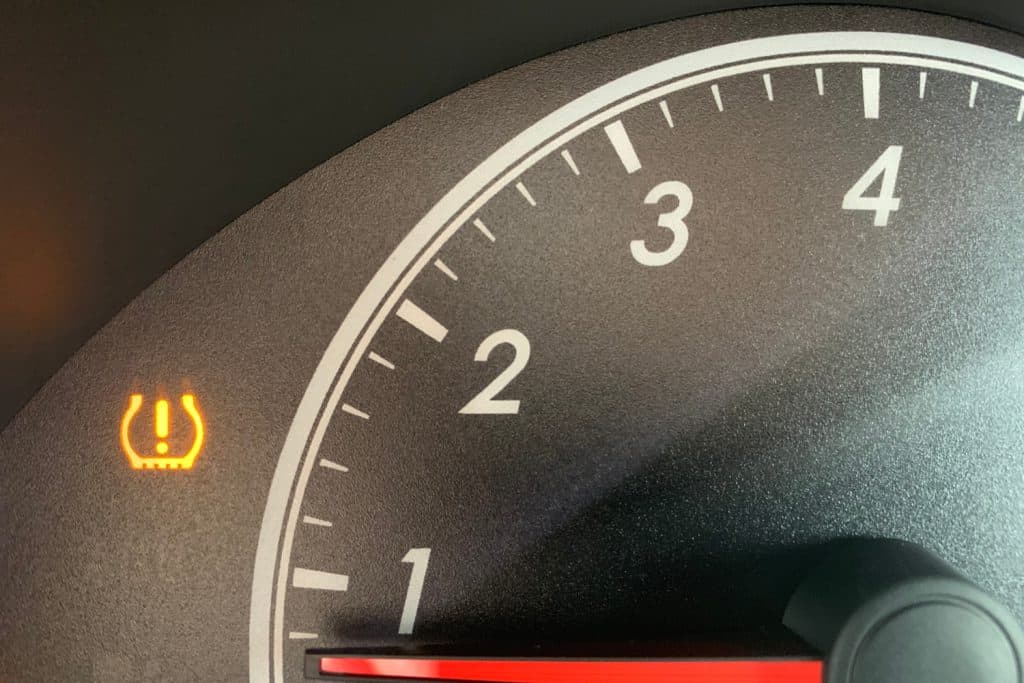
Another frequent culprit behind the low tire pressure indicator is a fault in the tire pressure monitoring system.
There is a sensor inside each tire that reads the pressure. While these sensors are generally reliable, they can become faulty over time. When this happens, the sensor might trip the indicator on the instrument panel even if the tire is adequately inflated.
The Tire Pressure Is Simply Low
The third possibility is that the tire in question is in fact low on pressure, but the tire isn’t totally flat.
Ambient temperature is the most significant culprit when it comes to tires losing a little bit of pressure. We discussed how tire pressure changes with temperature, and this relationship can result in enough pressure loss to trigger the low pressure indicator.
This situation is most common when a vehicle is parked outside overnight and the ambient temperature drops drastically. This will always cause the pressure to decrease, and if this drop in pressure is significant enough, it will trigger the low pressure indicator.
Can I Drive With Low Tire Pressure?
If your low tire pressure indicator illuminates, you should pull over as soon as you can to check your tire pressure and add air if needed.
Generally speaking, you should be able to drive for a few miles to make it to an air pump at a nearby gas station. However, it’s important to note that the lower the tire pressure, the more urgent the issue is. If the pressure drops enough, the tire might blow out.
What Causes A Tire To Blow Out?
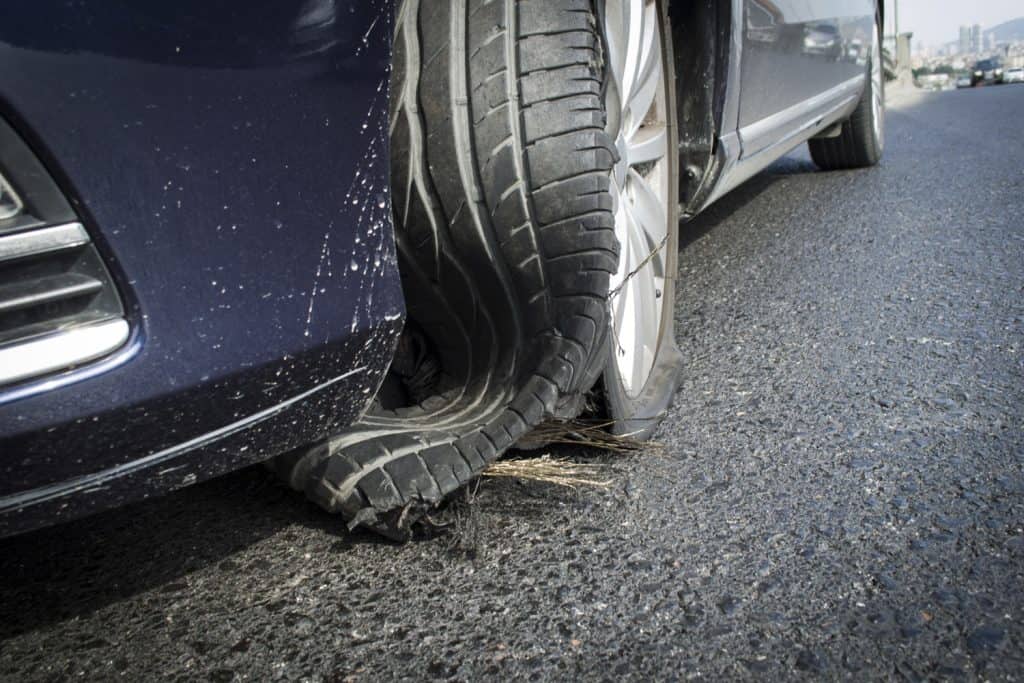
There are a few factors that can cause tires to blow out, but the most significant culprit is underinflation.
When a tire is underinflated, the sides make contact with the ground, which generates heat and causes wear. Since the sides of a tire are thinner, so they can quickly become worn to the point of blowing out.
How Can You Determine The Proper PSI Number For Your Vehicle?
Thankfully, vehicle manufacturers make it easy to determine the correct tire pressure for your vehicle.
All vehicles have a tire pressure chart inside the door jamb. Simply open the driver’s side door and look for the chart.
You also might be able to find the manufacturer’s recommended tire pressure in the vehicle’s owner’s manual, but checking inside the door jamb is generally the most convenient option.
In Closing
We hope this guide has equipped you with the information you need to ensure that your tires always remain at the appropriate level. If there's one component of automotive maintenance that's simple to control, it's tire inflation, so don't neglect it!
Before you go, be sure to take a look at these other related guides:
What Tire Pressure Is Too High?
